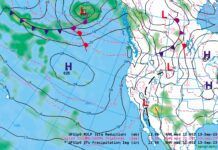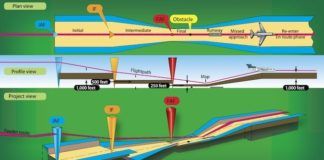Wingtip vortices aren’t the only type of disturbed air concerning pilots and controllers. According to the 7110.65’s Pilot/Controller Glossary, wake turbulence includes “thrust stream turbulence, jet blast, jet wash, propeller wash, and rotor wash both on the ground and in the air.” If an airplane’s got an engine, that engine’s going to move some air, in one form or another.
I’ve felt this firsthand. The Caribbean island of St. Maarten is famous for its Maho Beach, which sits just off the end of its international airport’s runway. The only thing between me and the thrust of a departing KLM 747’s four massive engines was a chain link fence and a narrow two lane road. I’ll never forget the wave of searing heat, air, rocks, and sand that crashed into me as I struggled to stand up against that jet blast, losing my battle when another tourist tumbled into me.
This turbulence becomes a real concern when you’ve got smaller aircraft taxiing behind or near larger aircraft. In AIM 7-3-1, “During ground operations and during takeoff, jet engine blast (thrust stream turbulence) can cause damage and upsets if encountered at close range. Exhaust velocity-versus-distance studies at various thrust levels have shown a need for light aircraft to maintain an adequate separation behind large turbojet aircraft.”
The AIM also warns the drivers of larger aircraft to be “particularly careful to consider the effects of their jet blast on other aircraft, vehicles, and maintenance equipment during ground operations.” Even smaller aircraft can pose a threat. There’s a reason conscientious pilots don’t run up their engines where their prop wash is directed in a harmful direction. Flung rocks and other debris can hurt property or people, or—simply annoyingly—scatter personal belongings everywhere.
ATC also must be careful with helicopters. Even a smaller helo like the ubiquitous Bell 206 JetRanger is generating enough downdraft in a hover to lift a ton and a half worth of helicopter. That air just smashes to the ground and spreads out in all directions. It could tip a Cessna. Therefore, AIM 7-3-7 says, “Pilots of small aircraft should avoid operating within three rotor diameters of any helicopter in a slow hover taxi or stationary hover.”
While you taxi about an airport, it’s ultimately your responsibility to space yourself with other traffic. As the 7110.65 states, “Because wake turbulence is unpredictable, the controller is not responsible for anticipating its existence or effect.” However, controllers are encouraged to issue cautionary advisories when applicable. Example? “Cessna 3AB, give way to the Boeing 737. Taxi to the ramp via Hotel. Caution jet blast.” —TK




